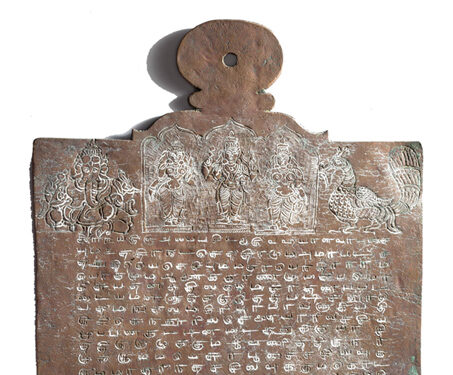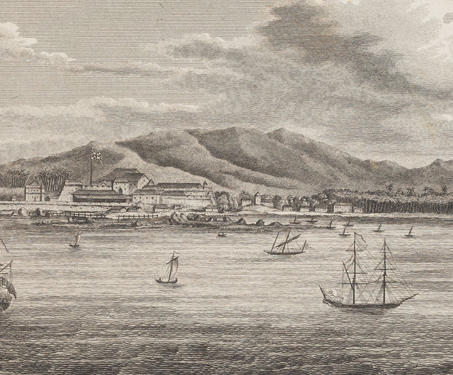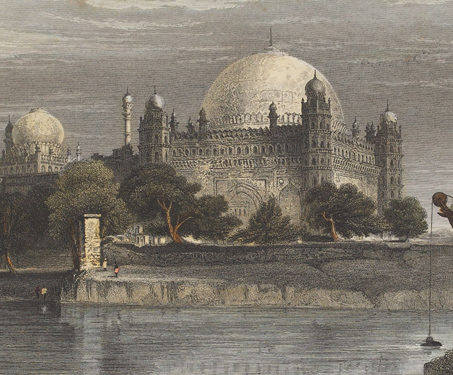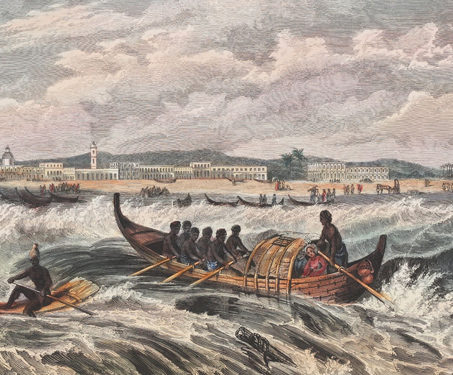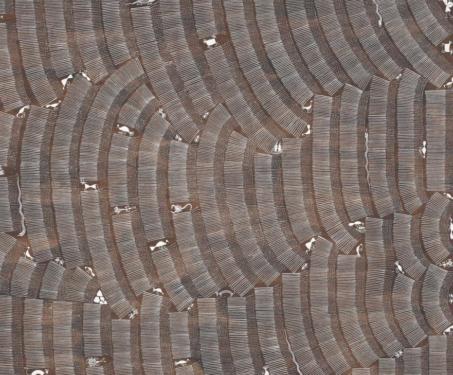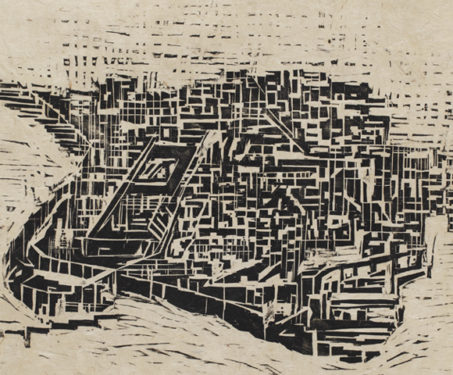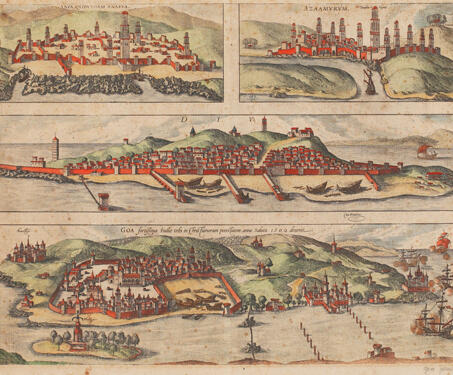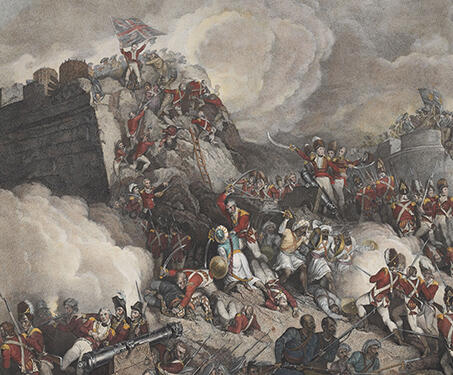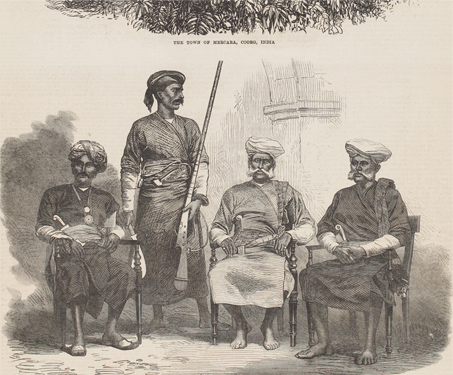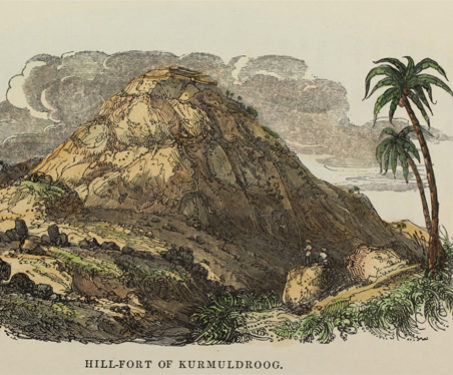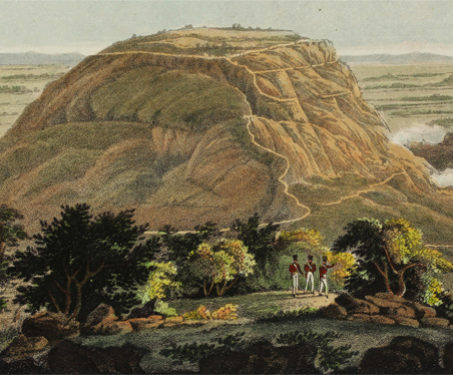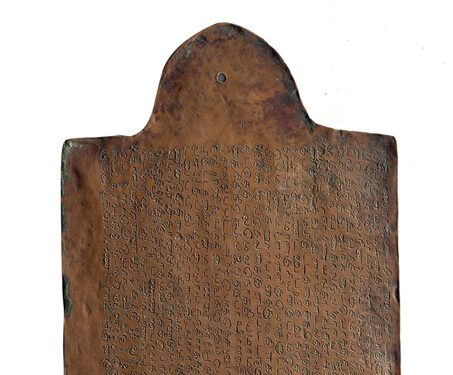

Copper-Plate Inscription, Madurai
This is an eighteenth-century copper plate with a village grant inscribed in Tamil. In 1733 CE, villages named Suriyan Kuttam and Sembikuttam from Kuruchikadu in Madurai mandalam (province) were granted to Anand Iyengar, son of Narayana Iyengar from Nettoor by Kumaramuthu Ragunatha Sethupathikatha Thevar, the son-in-law of Ragunatha Sethupathi (r. 1713-1725 CE), who ruled the… Read more »

